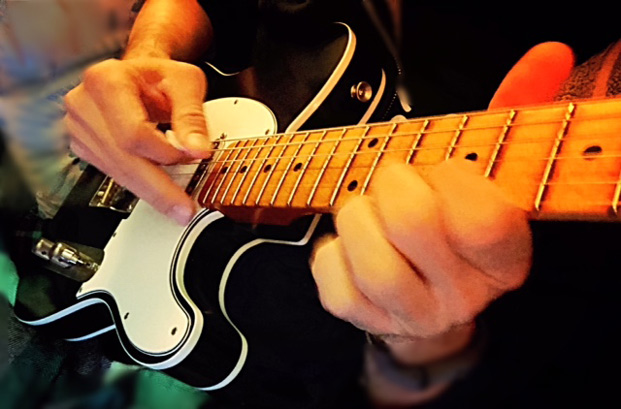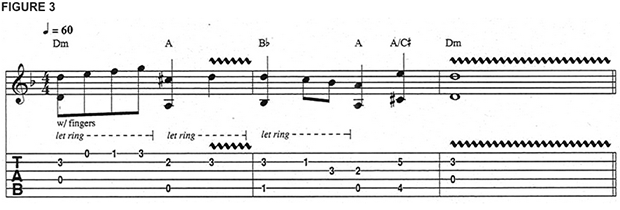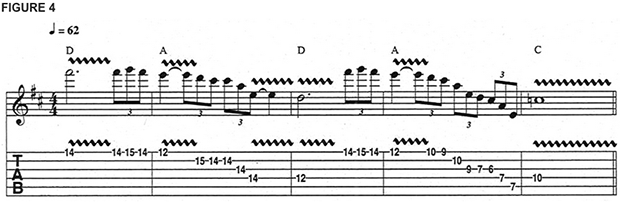Killer Vibrato: How to Master Five Essential Performance Techniques
Add some personality to your playing with these five essential techniques.

How many times have you read an interview in which a guitarist talks of “speaking through” the instrument or making it “sing”?
This is because emulating the sound of the human voice is a great way to add personality to your playing. In this lesson, we’ll cover a form of vocal mimicry called “vibrato”—the repeated fluctuation of a note’s pitch.
B.B. King’s singing lines and less-is-more approach to soloing were legendary. His much-emulated “butterfly vibrato”—named for the visual effect created by shaking a note with the first finger while fanning out the other three fingers—used perpendicular-to-the-string finger movement to achieve tight, rapid pitch fluctuations.
FIGURE 1 is a King-like line in B minor pentatonic (B D E F# A). To achieve his trademark vibrato (notated in wavy horizontal lines), anchor your thumb at the top edge of the neck and rotate your wrist back and forth, producing a series of slight bends and releases.

Eric Clapton also opts for perpendicular movement, but he gets a free-floating effect by rotating his elbow rather than his wrist. This results in slower, more even pitch fluctuations. FIGURE 2 is a Clapton-inspired line over a blues turnaround in Bb. Use your 3rd finger to fret both vibratoed notes.

Parallel vibrato—favored by classical guitarist as well as rockers like George Lynch and Warren DeMartini—is achieved by rocking a finger along the length of (or parallel to) a string, between two frets. As you move your finger toward the bridge, there is a slight decrease in the string’s tension, resulting in a lowering of pitch. Conversely, as you move toward the nut, the pitch is raised due to an increase in tension. The fingerstyle example in FIGURE 3 contains parallel vibrato.

Some players prefer to use whammy-bar vibrato. Pink Floyd’s David Gilmour is a master of this technique. To achieve his vibrato (FIGURE 4 à la “Comfortably Numb”), repeatedly depress your whammy bar and return the note to pitch in a tight, controlled motion.

You can also top off bends with vibrato. In FIGURE 5—rooted in E minor pentatonic (E G A B D)—first reach the target pitch, then shake the string without releasing the bend.

Get The Pick Newsletter
All the latest guitar news, interviews, lessons, reviews, deals and more, direct to your inbox!
Since 1980, Guitar World has been the ultimate resource for guitarists. Whether you want to learn the techniques employed by your guitar heroes, read about their latest projects or simply need to know which guitar is the right one to buy, Guitar World is the place to look.








![Joe Bonamassa [left] wears a deep blue suit and polka-dotted shirt and plays his green refin Strat; the late Irish blues legend Rory Gallagher [right] screams and inflicts some punishment on his heavily worn number one Stratocaster.](https://cdn.mos.cms.futurecdn.net/cw28h7UBcTVfTLs7p7eiLe.jpg)


